PART 3: SPAIN AND PORTUGAL: HOW CENTURIES OF RELIGIOUS BATTLES LED TO ARCHITECTURAL WONDERS, SAVVY CUISINE, FRAGRANT WINES, AND THE HEROICS OF WHICH NOVELS ARE WRITTEN
OLIVE OIL, HEMINGWAY, FLAMENCO DANCE, AND TAPAS
In Part 2, Roman ruins, mountain-top castles, gypsy offerings, history rich from battles and architectural ingenuity

Parador de Ronda in the background while restaurants, hotels and homes sit precariously on the edge of the El Tajo Gorge
There are more than 300 million olive trees planted across Spain. Don’t tell Italy, but we were informed that much of Italy’s olive oils derive from Spanish olives. That was just a glimpse into the world’s largest producers of olive oil. On the road from Carmona to Ronda, our Odyssey Tour group stopped for a few hours at Basilippo Calidad Gourmet Olive Oil company in El Viso del Alcor, Seville, Spain for a hands-on experience of picking olives from the trees. Unfortunately, it turned out to be the only time we had
on our two-week tour. We may not have picked olives, but the staff at Basilippo’s first spoke in-depth about olive oil production and then treated us to a tasting far more interesting than dipping small chunks of bread into a paper cup bearing a teaspoonful of olive oil, as is the typical olive oil tasting. The small family-owned company has won accolades across the world in competitive tastings and is considered the top olive oil producer in Spain.
What we learned: Early harvest of pungent green olives is best to produce extra virgin olive oil. Black olives, which are harvested later, cannot be used for extra virgin. We learned that owner Juan Antonio Morillo’s philosophy is that one must “talk to the trees for nine months” in order to get the best harvest. I didn’t know that Extra Virgin, which I routinely buy, means “no defects” and that once olive oil is opened, it should be consumed within 18 months, but unfiltered olive oil should be consumed within two weeks. Basilippo olive oils have a light blue paper band around the neck of the bottle. If it turns white, it means the bottle has been exposed to too much heat. Either refrigerate or use immediately. Those were some of the educational nuts and bolts.
Then came the guided tastings. We sampled their four main olive oils by taking a swig and swishing it around our mouths. The favorite tasting was being told to gently drizzle a fruity olive oil over chocolate ice cream, give it a quick stir, then savor on the tongue. Our 24 tour members were astounded at the unexpected yummy-ness!
Ronda turned out to be a surprising city in multiple ways. In high school and college, I read Ernest Hemingway’s books, For Whom The Bell Tolls and The Sun Also Rises.. But until we stood on a bridge opposite Parador de Ronda, where we stayed, did I learn from our local guide that this was the bridge featured in the former book or that a famous Ronda bullfighter, Cayetano Ordonez, was honored in the latter. Ordonez’ son, Antonio Ordonez, a leading matador in the 1950s, was chronicled by Hemingway in The Dangerous Summer.
Where we stayed: Parador de Ronda was once a medieval city hall. The positioning on the edge of the dramatic El Tajo Gorge, 500’ deep and 300’, wide may have been perfect for defending the city, but for us, it was one of those Oh My God! gasps out loud in awe of the views. When we stood on the bridge across the street and looked to the other side of the gorge, we could only wonder in amazement at the houses and hotels precariously balanced literally on the edge. One earthquake tremor. One major rain. Nothing would prevent their explosive fall.
What we saw: Walking through the narrow streets of Ronda’s old city I noticed that some of the windows had large dried palm fronds, still on the stalks, woven through the exquisitely ornate grill work fronting residential windows. This symbolic gesture means, “This is the home of Catholics—leave me alone” in the same way that Jews splashed lamb’s blood across their doors to prevent their first born from being slaughtered (as described in Exodus 12).
Though Ronda’s main streets are often overrun by tourists, there is still a sense of community and quiet on less-travelled roads. We stopped to admire the views from the tiered terraces of a former church now used as a retirement home for priests. The only competition for the meticulous landscaped gardens and colorful flowers were the spectacular views.
Ancient apartments are being recycled as condos for investors willing to buy real estate and at considerable expense, to maintain the historic exteriors while modernizing the interiors. Part of the attraction for investors and second-home buyers is the pleasant weather: warm, but not hot during the day and cooler evenings. Cooler evenings mean no mosquitos.
Although we have now seen one amazing church after another, each more ornate than the next, Ronda’s Church of Santa Maria Mayor captures a unique sense of the community. Local parishioners dress all the saintly statues, which are maybe four feet tall, in fresh clothes each month. The outfits, from underwear to glorious capes, headpieces, and puffy-sleeved dresses, are created and cared for by the parishioners, who consider the holy figures to be living residents of the church.
We took a stroll through a near-by park where Orson Wells’ ashes are allegedly scattered. From his many visits to Spain, Ronda was the famed actor, radio personality and film director’s favorite. He asked for his ashes to be scattered in Ronda.
I studied flamenco for a year once-upon-a-time. Have seen flamenco shows in restaurants and for special events. Never have I seen a flamenco show that targeted my emotions and senses like the 45-minute show to which Elena led us. Hey, if she who is so steeped in the dance was that enthusiastic about this 45-minute “taste of flamenco,” who were we not to attend? The afternoon show was a five-minute walk from our parador, inside El Quinque, a small cafe. The show was in an intimate room, curtained off from the restaurant. Beverages and food were optional. The three-member troupe consisted of a young, soulful, impassioned dancer who managed to bend, sway, fan and twirl on a tiny stage; a wailing singer who set the rhythms with his articulated hand claps while emitting love and longing from the depths of his gut, and a long-haired guitarist who flicked and slapped his instrument with virtuosity. I was entranced!
Granada is Spanish for pomegranate, a common motif embedded into tiled streets, walls or even woven into grill work.
Where we stayed: The Alhambra Palace. It was a last minute change to our itinerary, but one we all enjoyed. The hotel was quite modern and jam-packed with people.
What we saw: The Alhambra was built in the 13th century by the Moors as a fortress. The Sultan built 75 gardens around the castle over 25 acres, an area larger than the castle. The UNESCO World Heritage site is next door to a castle Charles V began building as his summer palace, but never finished. The royal family abandoned it and moved to Toledo to avoid invasions by Ottomans. They were in Toledo just a short time before moving to Madrid.
Typical and significant to Arab houses, the many patios connect to gardens. This creates an open air, natural air conditioning system. One unique aspect to this palace is that it appears square from the exterior, but inside, the rooms are round. In 1812, after occupying Alhambra, Napolean and his troops left, trashing more than 50% of the palace and gardens. He didn’t want his enemies to be able to reuse the razed buildings. The area was abandoned for the next 100 years until the government decided to restore them. The Alhambra complex now has an open air amphitheater that seats 1000 and is used for music and dance festivals and concerts. The palace also houses two national art museums.
Features of the Alhambra that earmark its design as iconic include the Ceiling of Seven Heavens. The floor below it has the tiled inscription: “Only winner is Allah.” This became the first throne room of the medieval ages. Christopher Columbus’ journey to the New World was approved in this room. Also, the spacious patio of the 12 Lions, once the centerpiece of the harem, has existed over 600 years. Some of the lion sculptures still in place are originals. Others that had to be repaired from Napolean’s destruction were moved to other parts of the palace and are used to bear ornate coffee tables. If you want to know more about Alhambra, read Washington Irving’s book, Tales of the Alhambra.
What we learned: Many cities have a signature dessert. In Grenada it is called Pionona, a custardy puffed pastry so named because the top resembled the bishop hat of Pope Pius IX. His Italian name was “Pio Nono”.
Typical tapas in Grenada would be octopus, prepared any number of ways.
This was the first city we’d been to with buildings in a color other than white.
In every luxury hotel we’ve stayed at thus far, showers have one glass half-door, so when the shower is on, water unavoidably splashes onto the floor. We didn’t find a whole door on the shower until the end of the trip. The half-shower door came up as a topic of amused bewilderment. Actually, so did the ever-present bidets in the hotel restrooms. No one in our group owned up to having ever used one or knowing how. We laughed at being unsure if this was age-related or American no-how.
We first saw a Queen or King-sized bed as really being twin beds pushed together at a hotel in Denmark, but now realize that seems to be standard for European hotels. Each bed has tight-fitted sheets and blankets. No matter how close the beds are pushed, there is a gap.
We ate tapas nearly every meal that we were on our own. (Most of our dinners and some lunches were arranged for the group by Odyssey.) Tapas is not the same as in America (at least the places with which I am familiar.) Spanish tapas dishes are usually large portioned (even though called small plates) for little money. In America, we are served tiny portions that can cost as much as an entrée. I tried many Spanish tapas dishes, finding that the description of ingredients may not be what’s actually included. For instance, a Russian salad described as having mixed greens and some vegetables always comes with fresh tuna. That was a huge surprise when I ordered it as one of the dishes Russ and I would share. He doesn’t eat tuna. He did become enamored with
Spanish omelets, which rarely had any visible egg to them. Mostly they are composed of soft chopped potatoes cooked into a pie-shape, but each omelet was vastly different from the next. Croquettes were Tootsie Roll shaped and sized; generally charged by the piece. Occasionally small dishes of olives or cheeses are pre-set on the table, but if you eat any of it, you are charged.
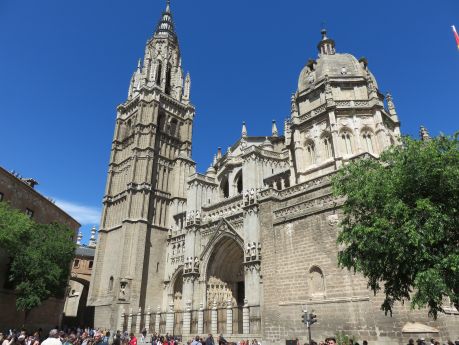
The Cathedral of Saint Mary of Toledo, one of the three 13th century High Gothic cathedrals in Spain.
Toledo is another city in which we spent scant time, but what we saw was enlightening. Toledo is most known for its weaponry, armor, and for being the months-long temporary home for Charles V before he transitioned to Madrid. We visited The Cathedral of Saint Mary of Toledo, also called Primate Cathedral of Toledo, one of the three 13th century High Gothic cathedrals in Spain. It began as a synagogue in the 13th century. A lone Star of David remains etched in a wall. No active synagogue and few Jews currently exist in the city. Toledo was the home of El Greco, who captured the city’s magnificence in many of his artworks.
IN PART 4: MADRID, BARCELONA AND TIPS FOR TRAVELLERS
All photos are by Russell Wagner.
Karen Kuzsel is a writer-editor based in the Orlando area who specializes in the hospitality, entertainment, meetings & events industries. She is an active member of ILEA and MPI and is now serving on the 2016 – 2017 MPI Global Advisory Board for The Meeting Professional Magazine for the second consecutive year. She is a member of the Society of Professional Journalists. Karen writes about food & wine, spas, destinations, venues, meetings & events. A career journalist, she has owned magazines, written for newspapers, trade publications, radio and TV. As her alter-ego, Natasha, The Psychic Lady, she is a featured entertainer for corporate and social events. karenkuzsel@earthlink.net; www.ThePsychicLady.com; @karenkuzsel; @thepsychiclady.

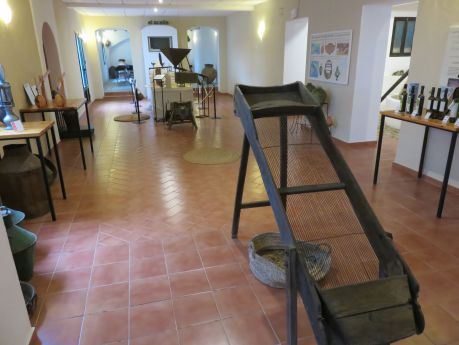

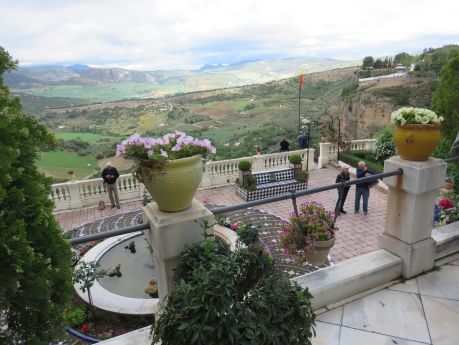
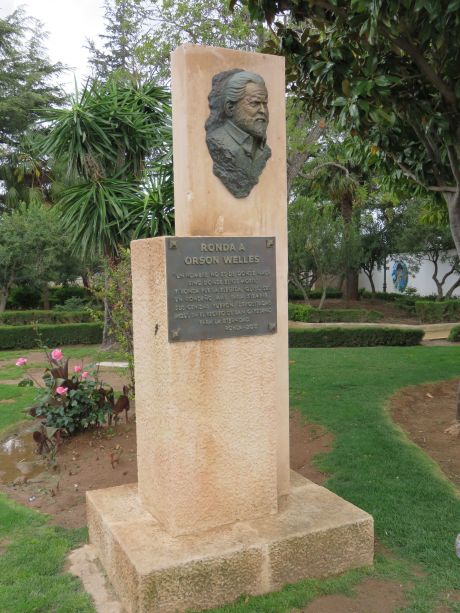

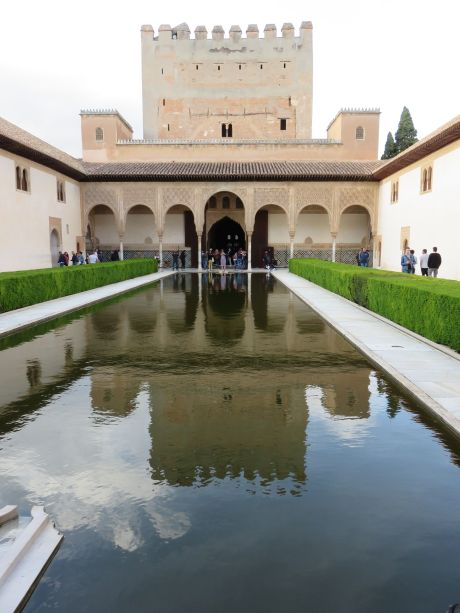


Always terrific adventure…you feel like you were there with you!
Thank you!